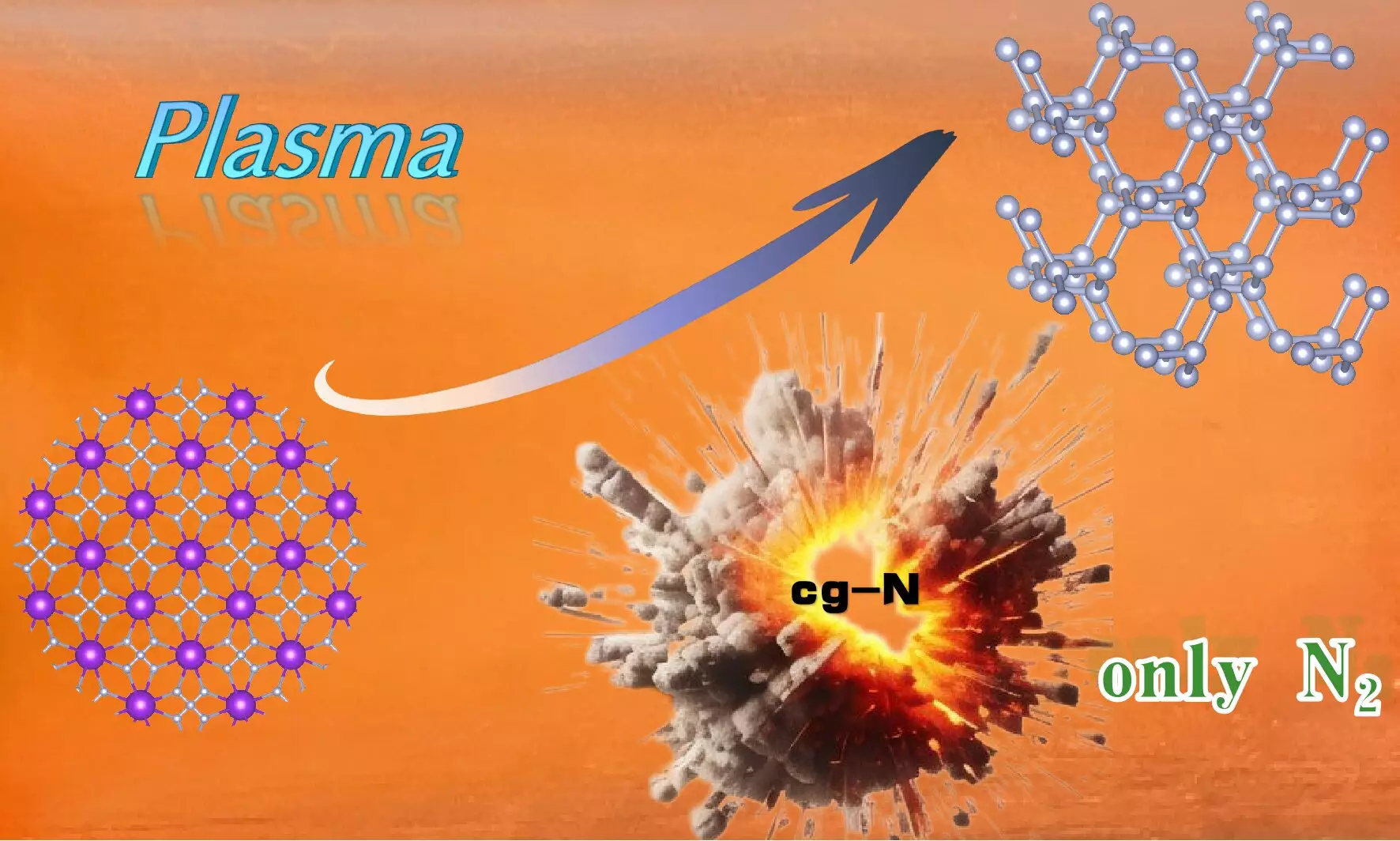In the realm of high-energy-density materials, cubic gauche nitrogen (cg-N) stands out for its remarkable properties and potential applications. Researchers led by Professor Wang Xianlong at the Hefei Institutes of Physical Science, affiliated with the Chinese Academy of Sciences, have successfully synthesized cg-N using a novel approach that significantly enhances its feasibility for practical applications. This new method, detailed in a recent publication in *Science Advances*, demonstrates a crucial step towards developing safe and efficient synthesis techniques for advanced materials at atmospheric pressure.
The synthesis of materials under atmospheric pressure is vital for various reasons, including safety, cost-effectiveness, and scalability. Traditionally, the production of high-energy-density materials often requires extreme conditions that pose risks and limit accessibility. The research team’s breakthrough in synthesizing cg-N using plasma-enhanced chemical vapor deposition (PECVD) techniques represents a significant milestone in material science. It allows for the creation of a stable nitrogen material that consists solely of nitrogen atoms interconnected by N-N single bonds, providing a decomposition product that emits only nitrogen gas, a benign environmental footprint.
A pivotal aspect of this research has been the use of first-principles calculations to simulate and analyze the stability of cg-N under various environmental conditions. By investigating surface saturation, pressure, and temperature, the team uncovered critical insights into preventing decomposition under low-pressure conditions. This theoretical framework not only guided their experimental procedures but also enhanced their understanding of the underlying mechanisms that contribute to the stability of cg-N. As temperatures approached 750 K, the researchers noted that the stabilization of surface suspension bonds was essential in maintaining the integrity of the material.
Choosing the right precursor for cg-N synthesis was another vital innovation. The research team opted to utilize potassium azide (KN3), which is less toxic and explosive compared to traditional precursors. This decision underscores the drive toward safer laboratory practices while harnessing the strong electron transfer capacity offered by potassium. The successful implementation of this precursor through PECVD technology highlights an important advancement in synthesizing high-performance materials without the limitations of the carbon nanotube-limiting effect, which has been a challenge in previous methodologies.
The work by Wang Xianlong and his team opens new avenues for the development of high-energy-density materials. The findings that verify thermal stability up to 760 K add credibility to the potential uses of cg-N in various industries, including those focused on energy storage and propulsion systems. The strategies developed in this study not only present a practical means to synthesize cg-N but also lay the groundwork for further exploration into new high-energy materials. This endeavor represents a hopeful leap forward in materials science, with profound implications for the future of high-energy-density compounds.
Overall, this research exemplifies the crucial intersection of theoretical modeling and practical synthesis, propelling the field of high-energy-density materials into promising new territories.

